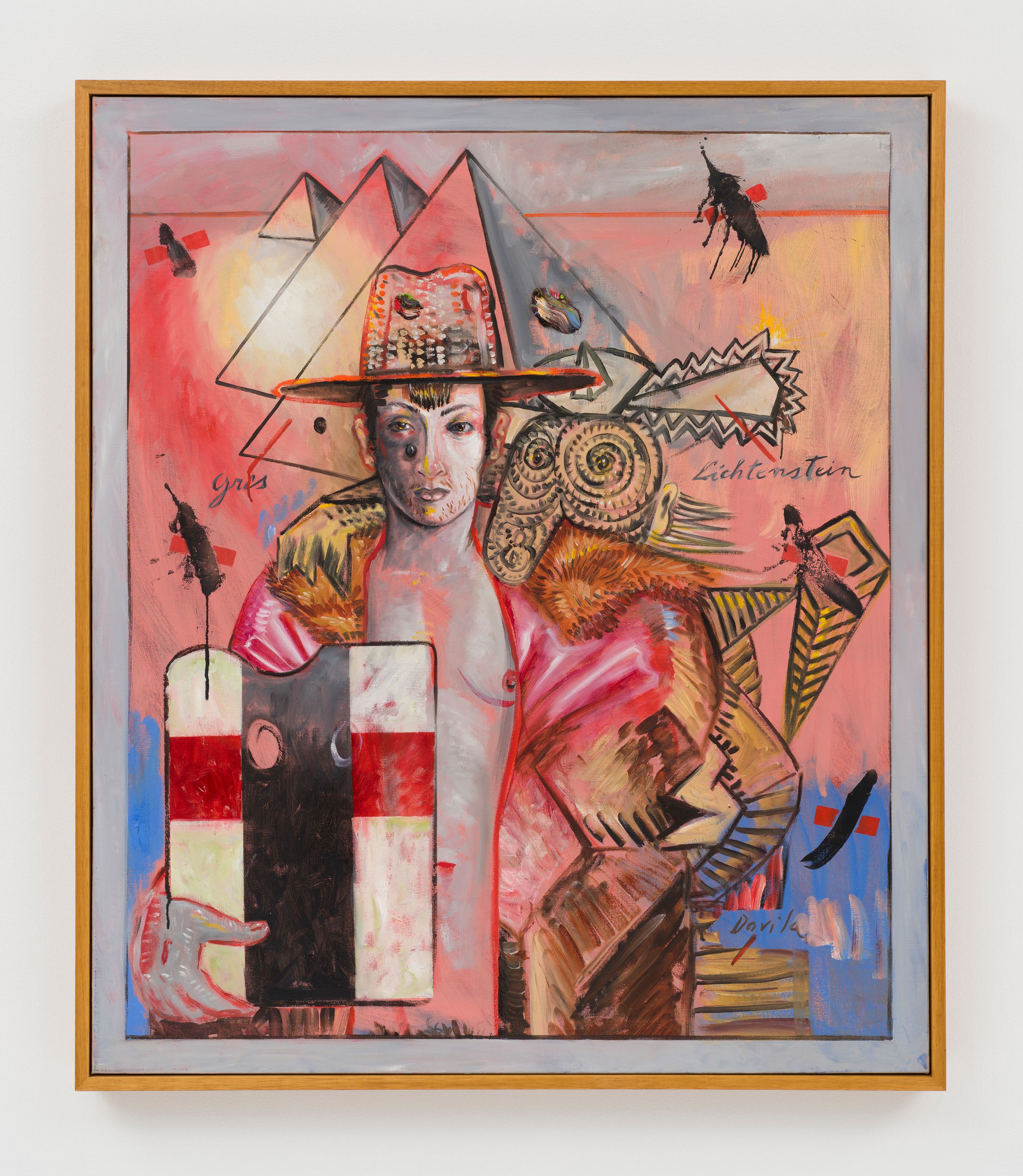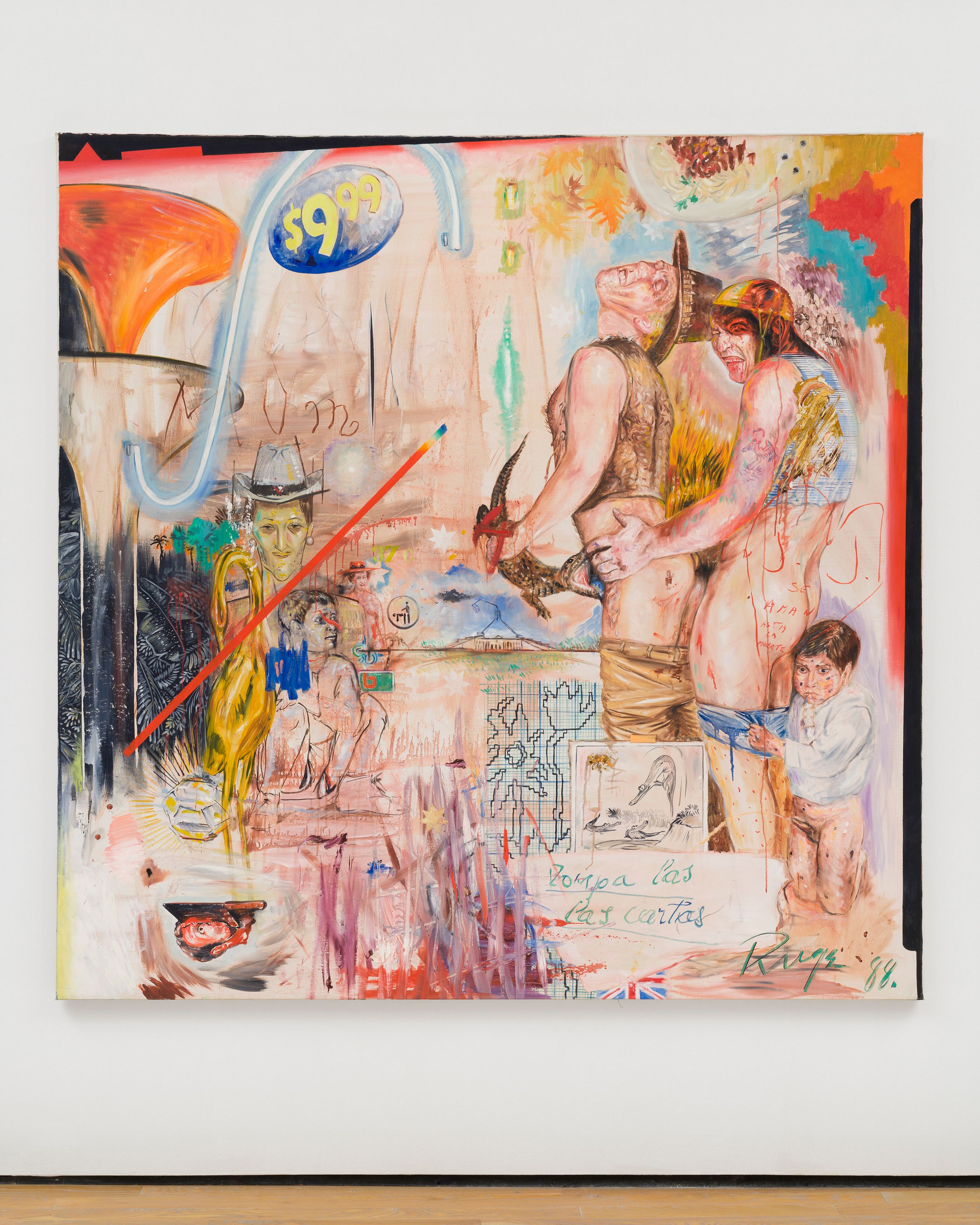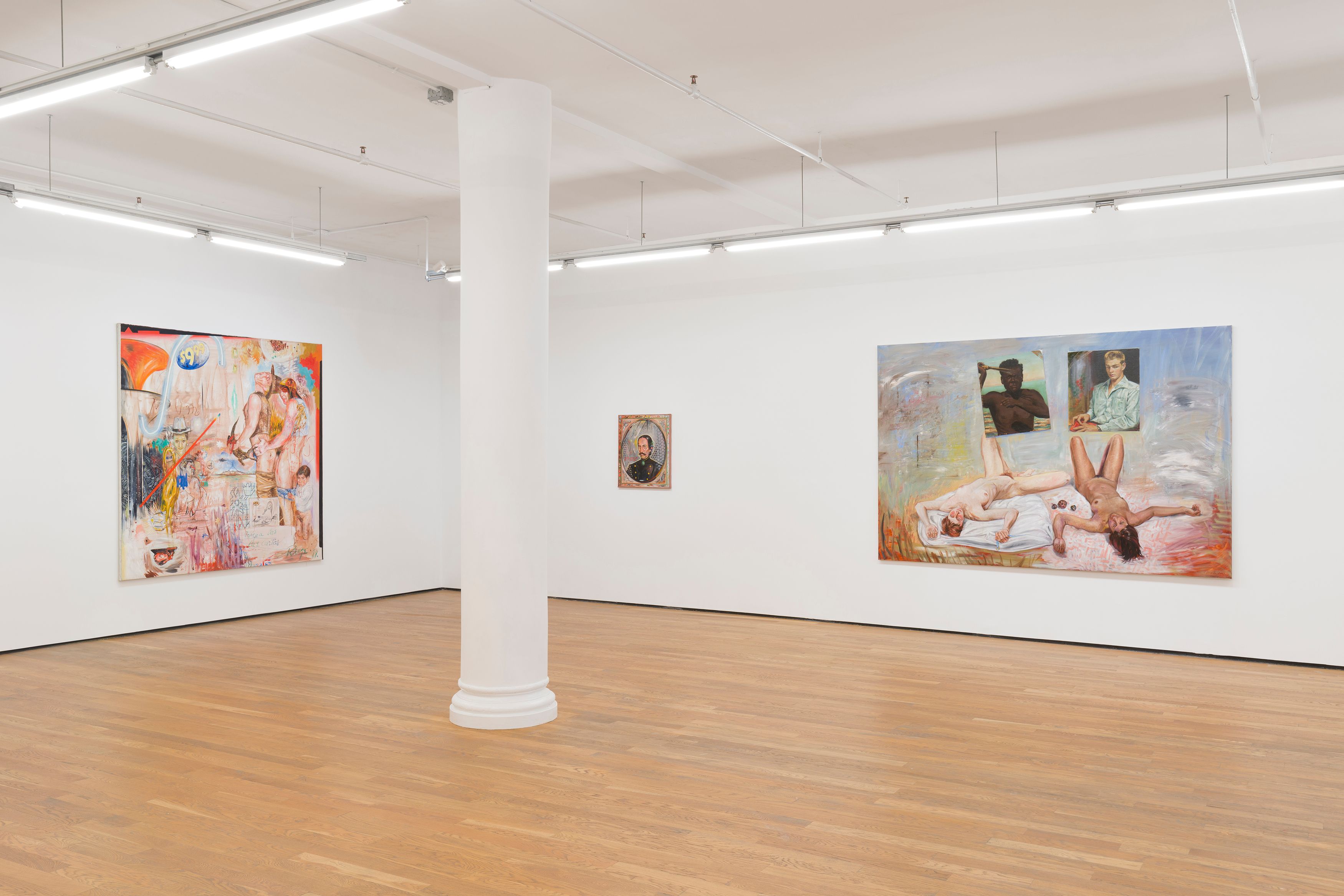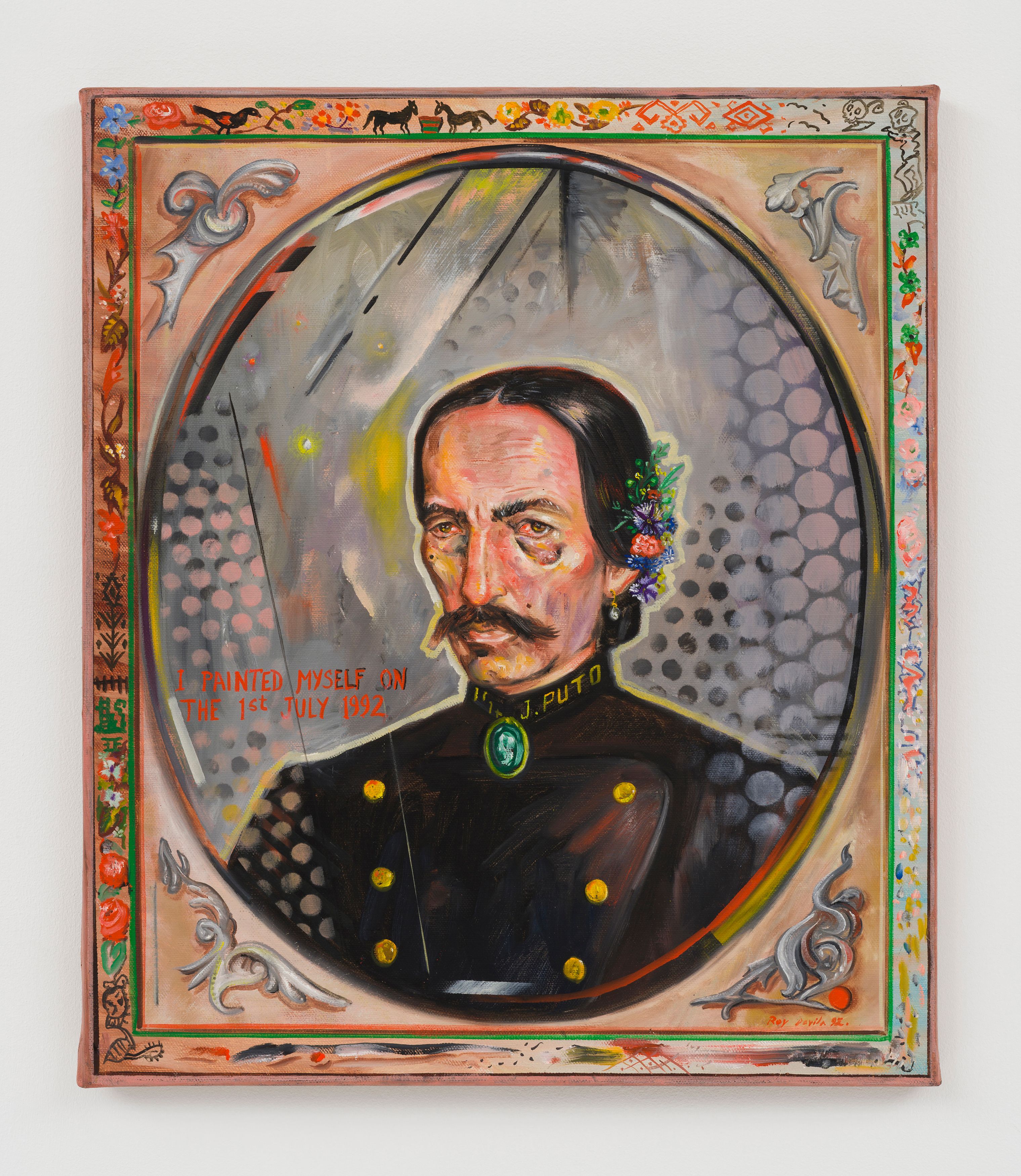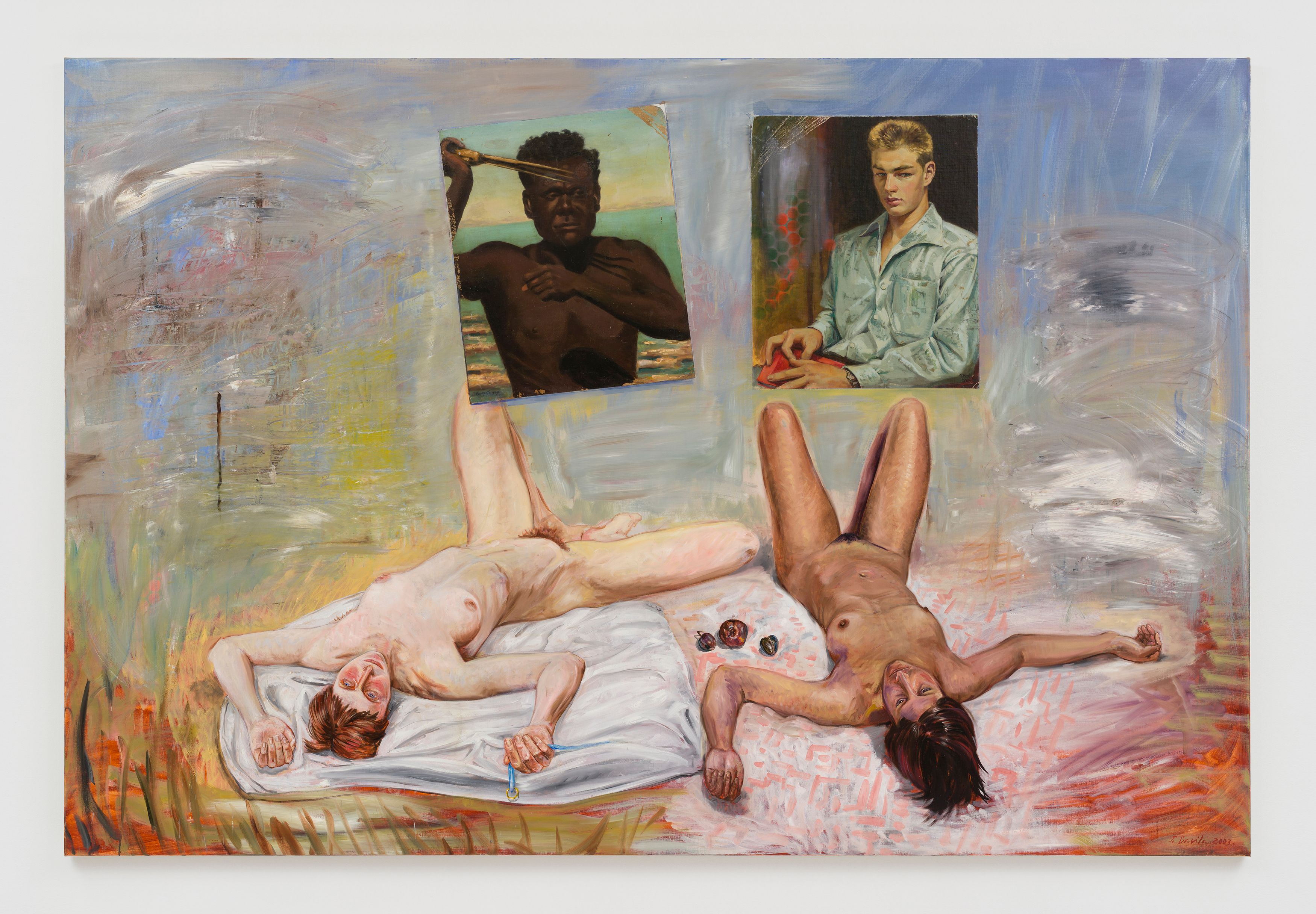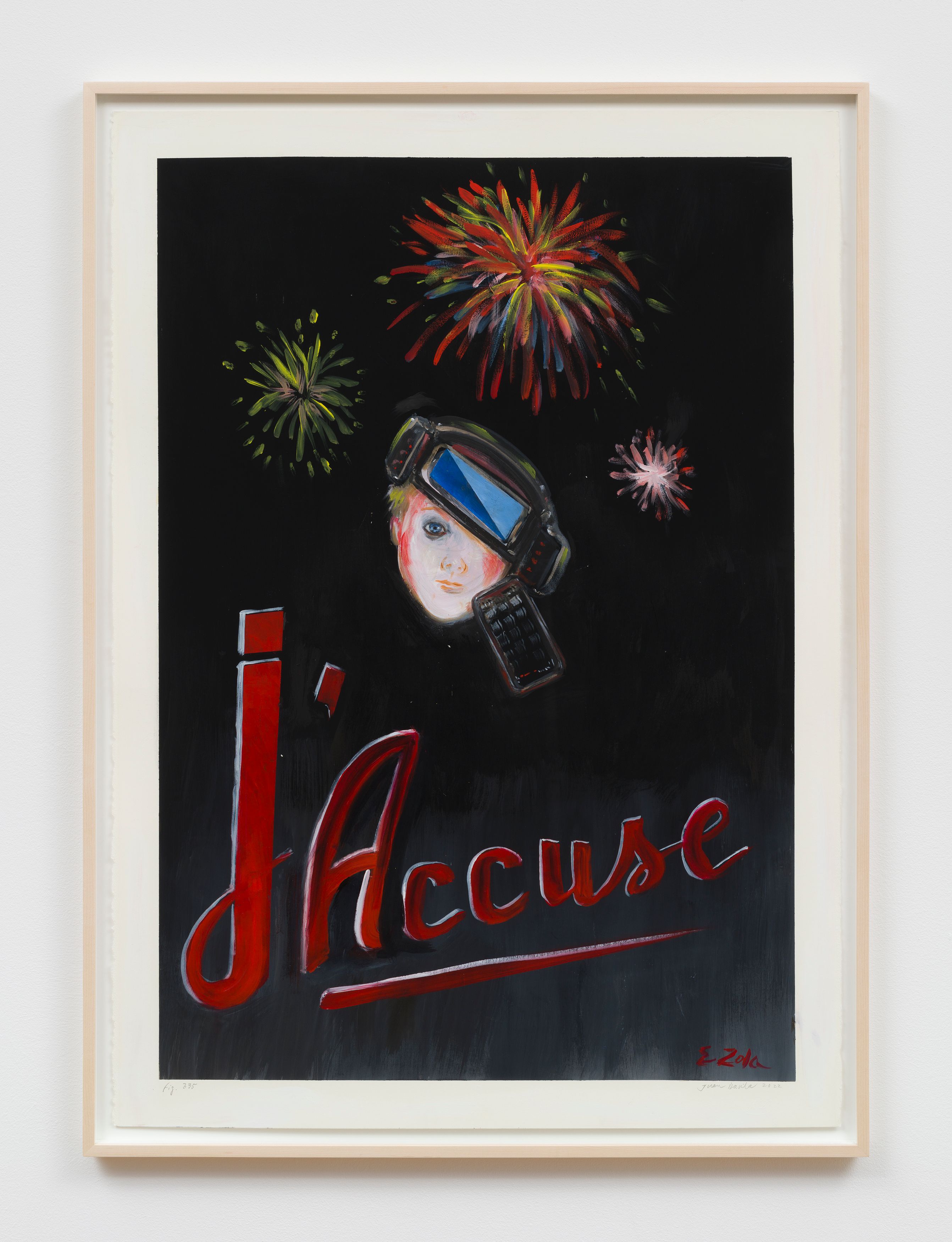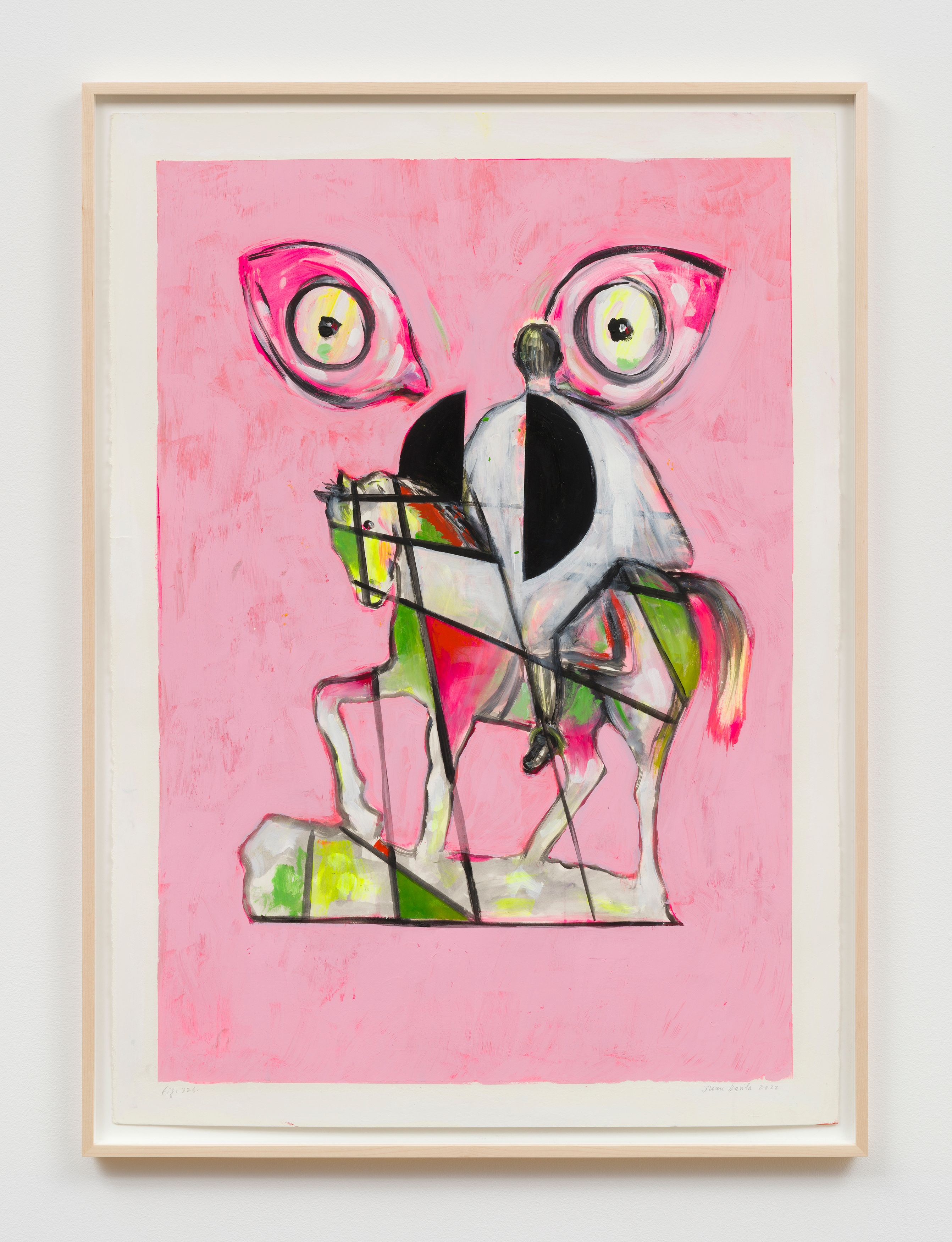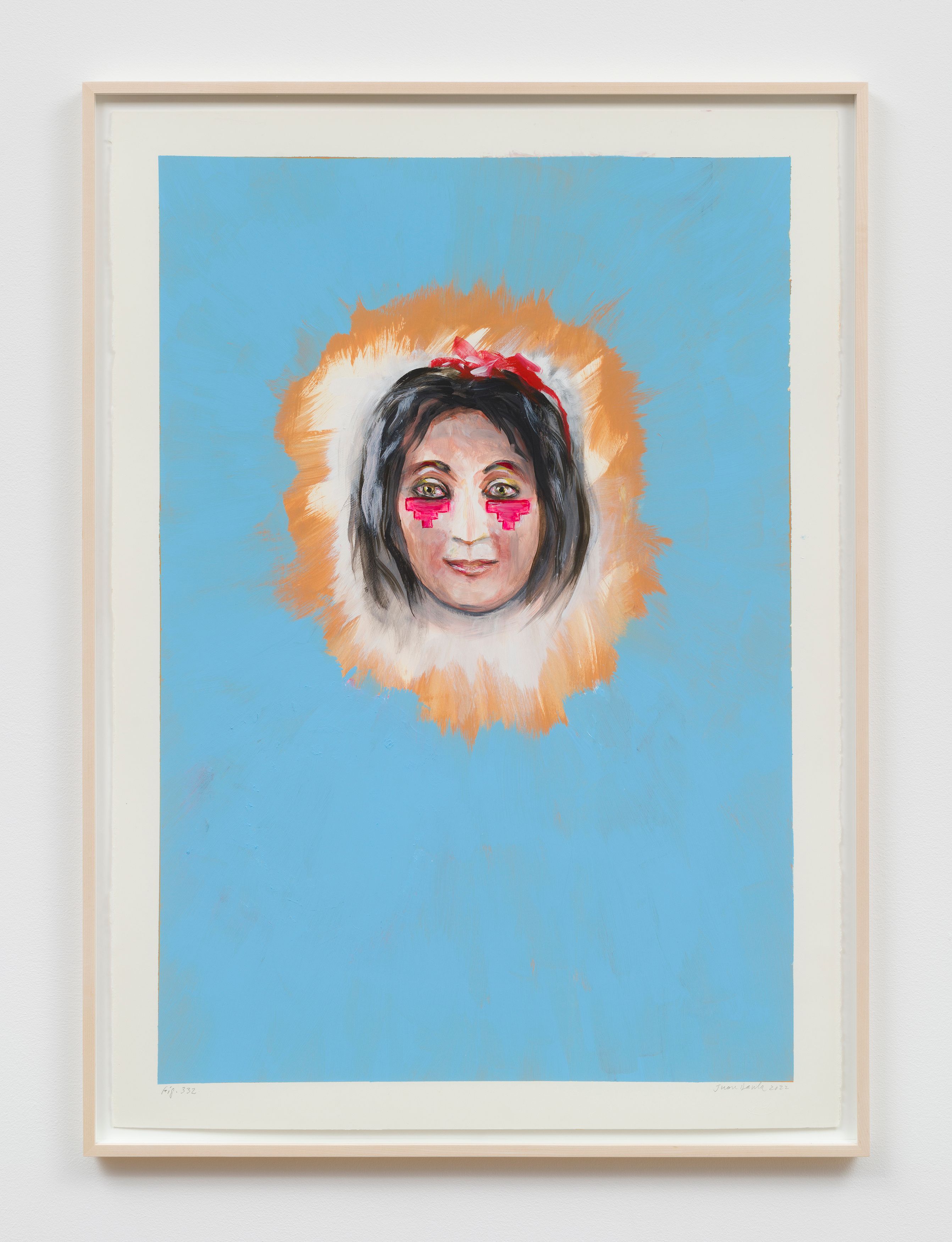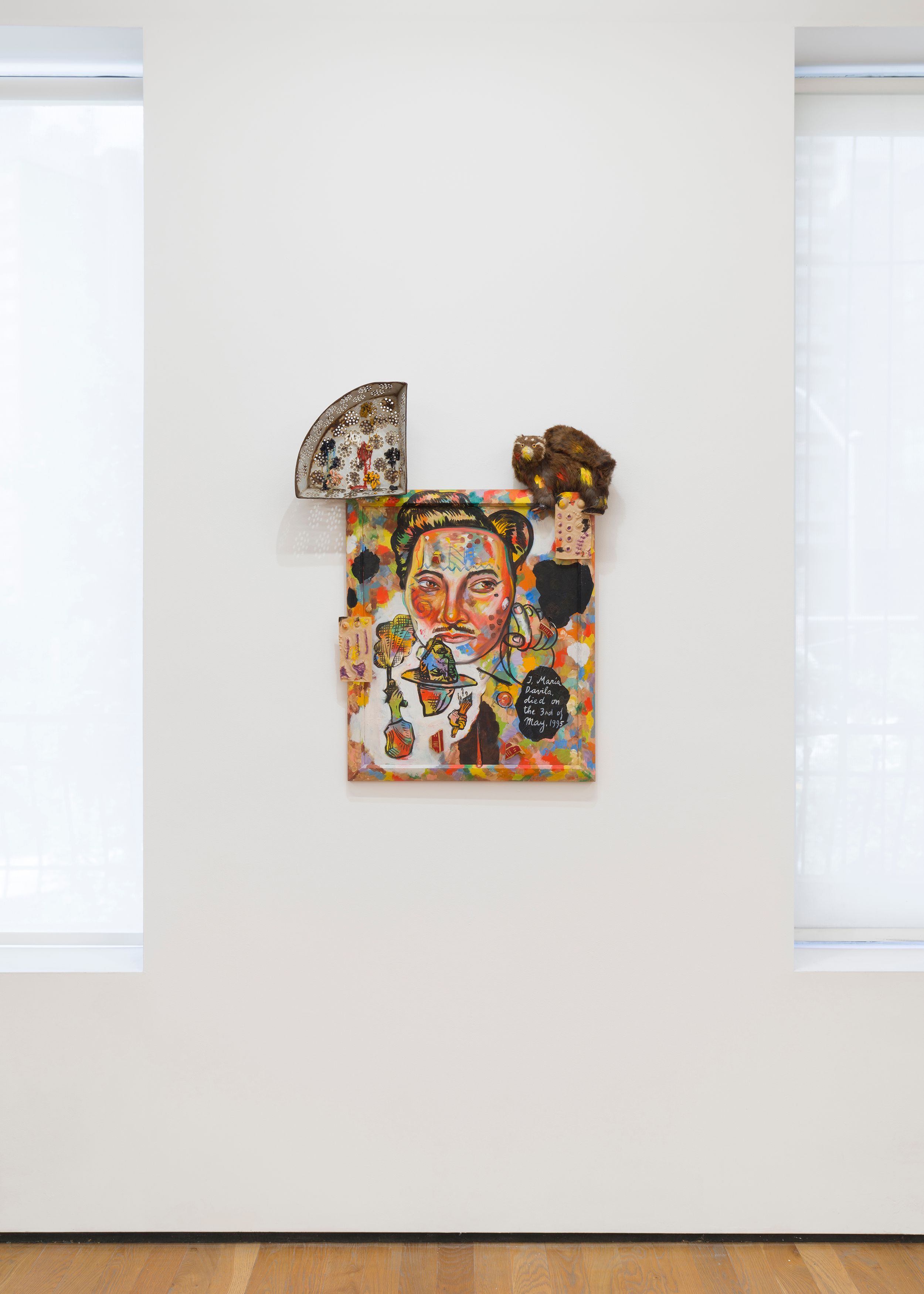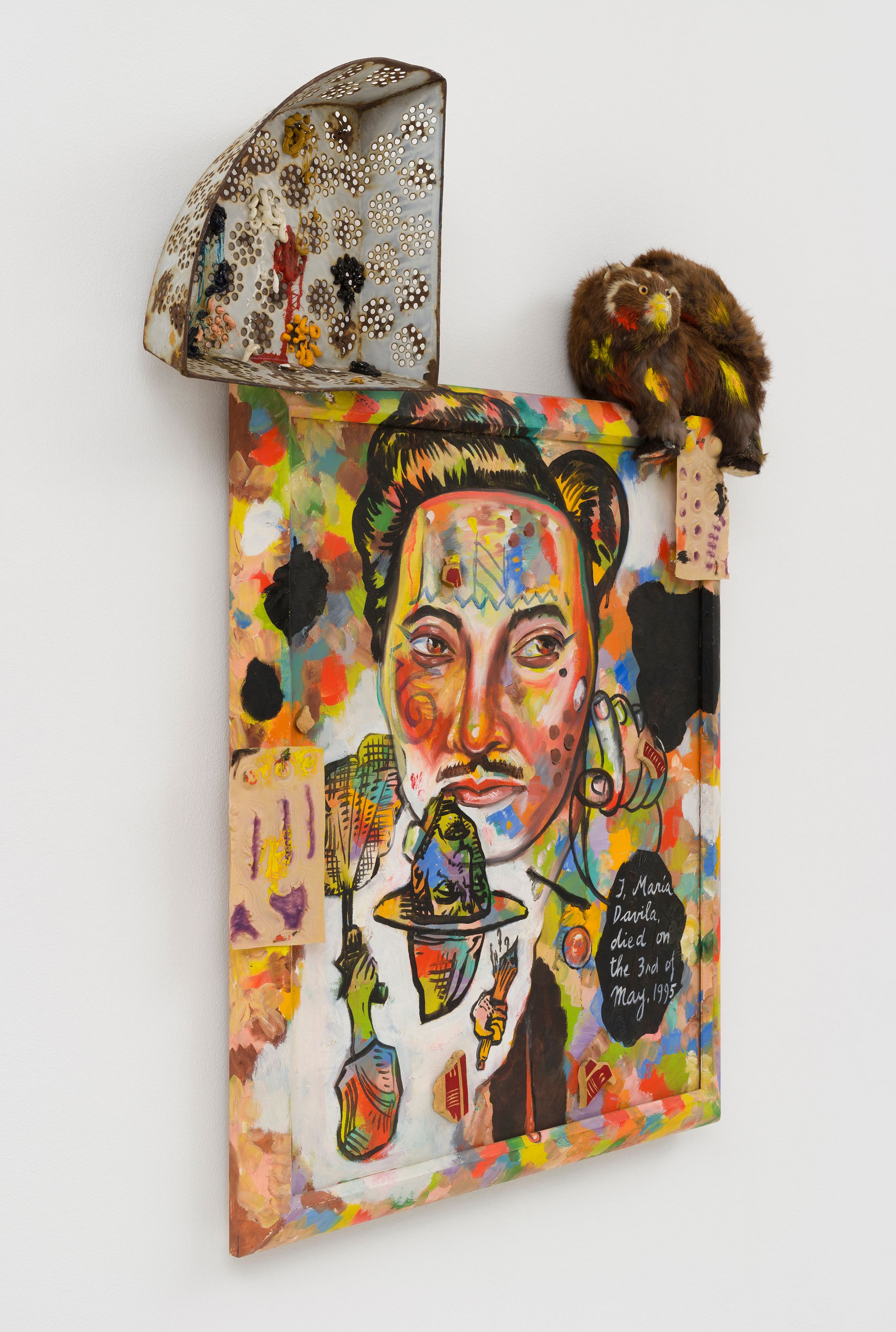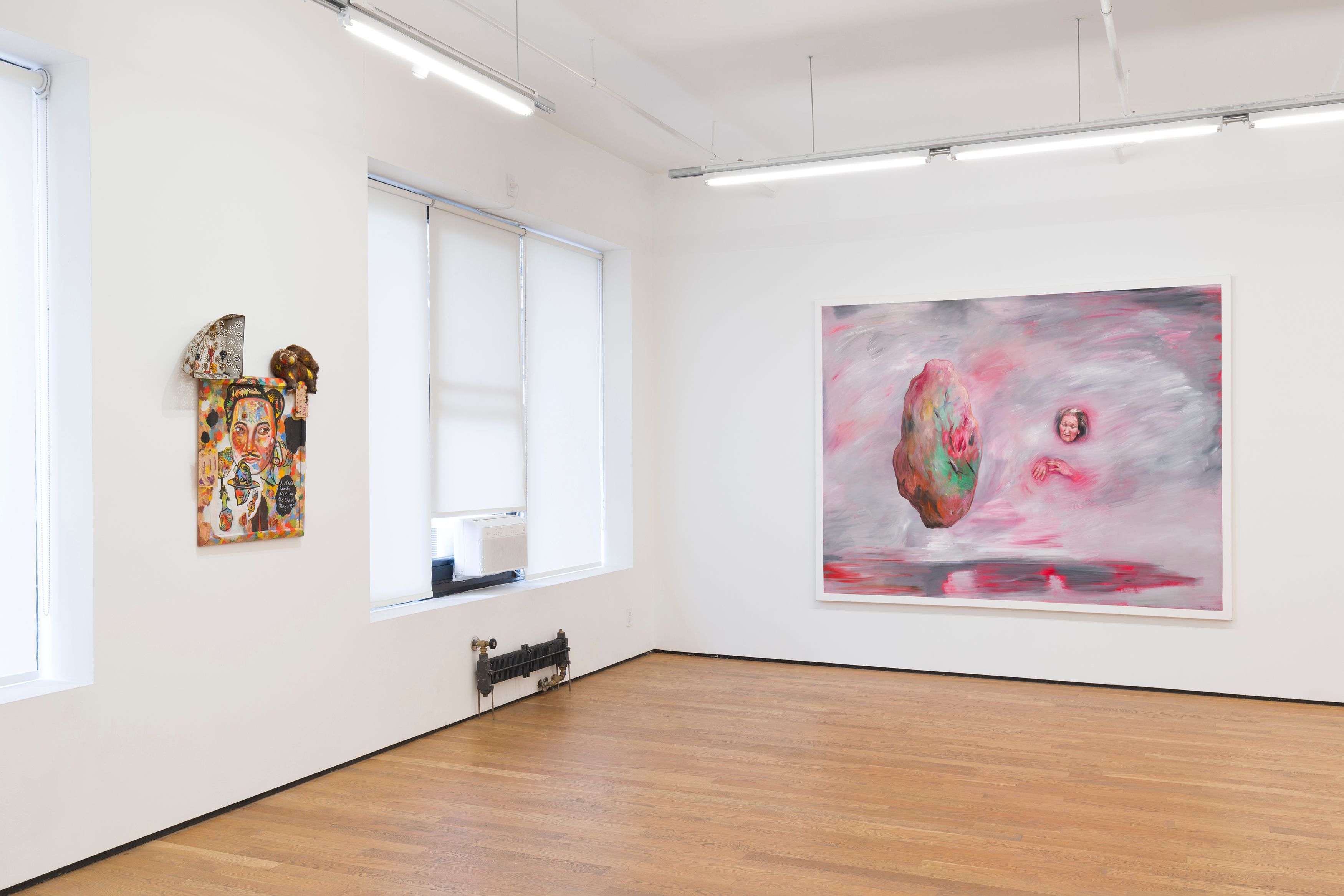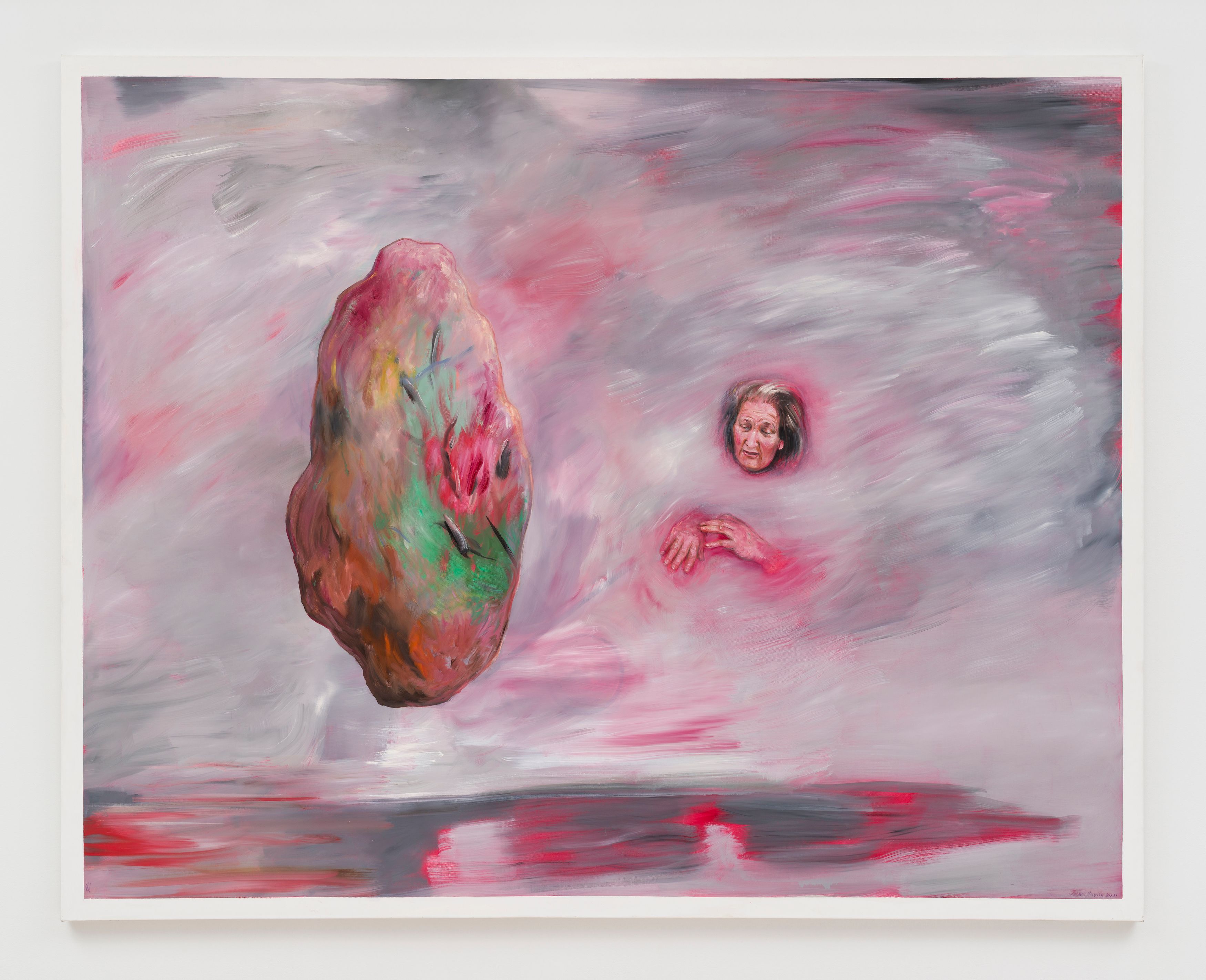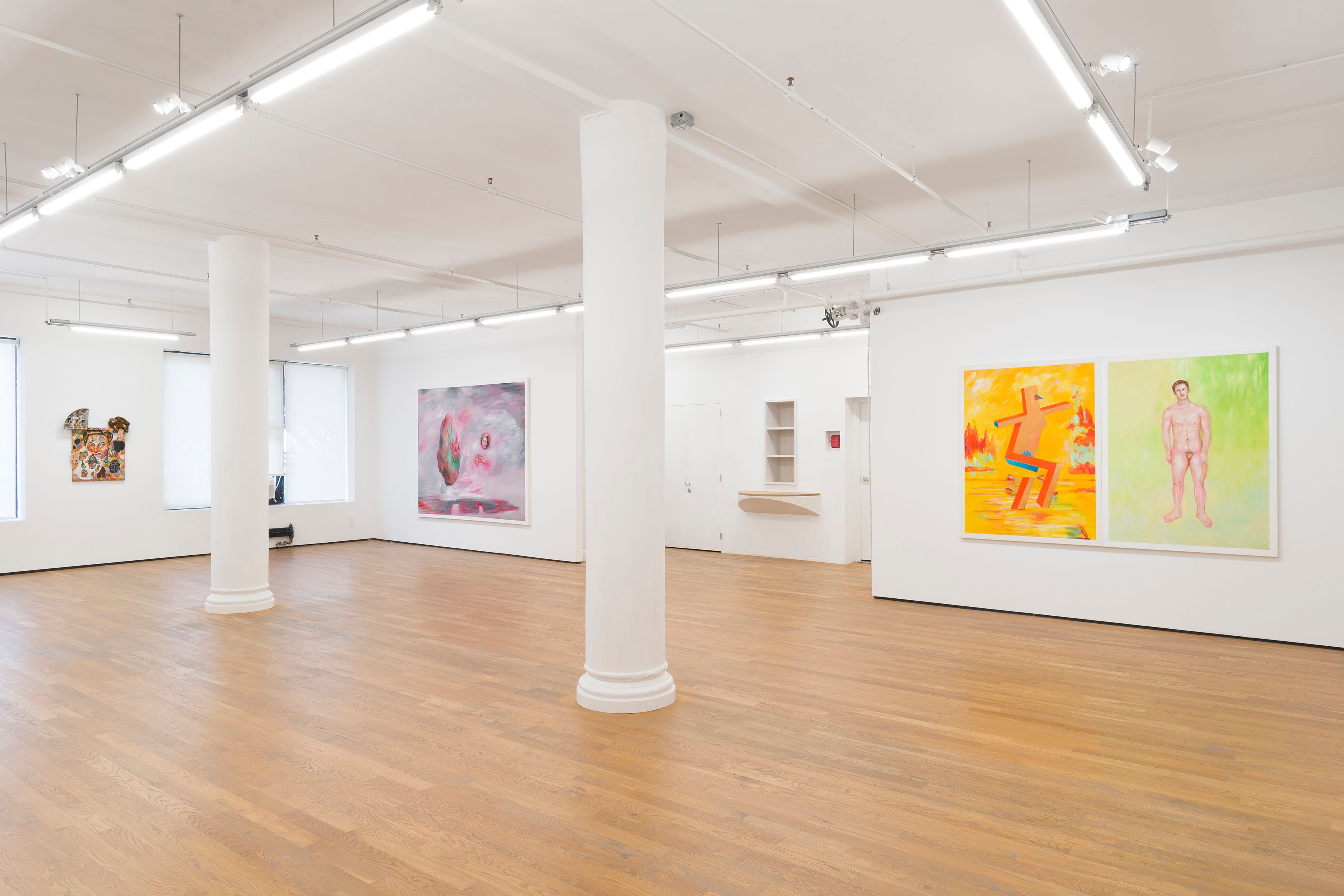- Presented by Foxy Production, New York
- and Kalli Rolfe Contemporary Art, Melbourne
- Extended through 30 June 2023
Foxy Production, New York, and Kalli Rolfe Contemporary Art, Melbourne, are very pleased to present a survey of works by renowned Chilean-Australian artist Juan Davila. Comprising paintings, collages, and works on paper from the 1980s to the present, it marks Davila’s inaugural North American solo exhibition.
Davila synthesizes a wide range of genres—including history painting, Surrealism, and Pop Art—and subjects—including Latin American history, colonialism and Indigeneity, gender and sexuality—into a distinctive and unique voice. He disrupts visual conventions with his urgent and visceral political and philosophical intuitions. He relentlessly upends received notions of history, culture, and decorum to make audacious, enigmatic observations that he describes as “poetical acts”:
“If an artist at the end of the world could redo the art history of the West, getting everything upside down within a painting, confusing styles and dates, mixing them with psychoanalytic issues and other narratives, it would be creation as a poetical act.” Juan Davila, 2017
Davila’s proposition is a window into the inner-workings of his extraordinary art, which he began making in his native Chile in the early 1970s before moving to Australia in 1974 after Pinochet’s “coup d’état.” His use of pastiche and quotation and his critiques of Modernism lead to his association with the Post-modernist movement; yet, his work stands alone for its incandescently provocative content: its parodies of famous artists; its graphic sexual content; its irreverent depictions of Latin American revolutionary history; and its savage and hilarious jabs at the artist’s host nation’s culture and foundational stories. But Davila’s ultimate aim is not to outrage or offend: it is to cast a wry eye upon the myths that underpin identity: on those myths that dominate our lives and on those that have been repressed and replaced, including through the “violence, genocide and crushing of local culture” in South America, Australia, and beyond. Identity for Davila can be unstable and mysterious: some of his works are signed with pseudonyms, and his self-portraits appear to be of other people.
The exhibition includes two oil paintings from the 1980s, “Ned Kelly’s Psychosis” (1984) and “Crocodile Dundee” (1988), that mercilessly parody Western modern art and Australian settler culture. Two baroque portraits from the 1990s channel the nexus of patriarchy and religion: the vivid collage, “Ex Voto” (1991), that imbues Latin American devotional art with an riotous maximalism, and “Self-portrait” (1992), a feminized version of a self-portrait by 19th Century Mexican artist Hermenegildo Bustos, who was famous for his own Ex Voto paintings. The large collage, “Two women on the banks of the Yarra” (2003), is from a series of reimaginings of the female nude within art history: here, the women’s gaze is away from the artist and toward portraits of two men: one Indigenous and one European. “Carmen Gallardo” (2005), is an allegorical silkscreen of a childhood friend whose mother relayed indigenous Mapuche myths to the artist when he was a child. Two recent works in oil confront the legacy of portrait painting with their surreal compositions of figures upon abstracted backgrounds: one depicts the head and hands of a Machi, a gender-fluid Mapuche shaman, next to a levitating rock; the other is a diptych of a Gumby-like figure alongside a nude trans-person. An eclectic series of recent acrylics on paper cover the spectrum of the artist’s ongoing interests, including revolutionary history, romantic landscape painting, and the relationship between text and subtext.
Juan Davila (Santiago de Chile, 1946) lives and works in Melbourne, Australia. He studied law and then fine art at the University of Chile in Santiago. He has had solo exhibitions at the Chisenhale Gallery, London, UK (1994); the Museum of Contemporary Art, Sydney, Australia (2006); the National Gallery of Victoria, Melbourne, Australia (2007); Matucana 100, Santiago, Chile (2016); and MUSAC, Leon, Spain (2018). He was included in the Biennale of Sydney (1982 and 1984); the São Paulo Biennial (1998); Documenta 12, Kassel, Germany (2007); and the 38th EVA International, Limerick, Ireland (2018).
Selected group exhibitions include: Museum of Contemporary Art, Santiago, Chile (1970); ”Artist’s Proof, Leppe, Cardenas, Davila, performance,” XII Biennale of Paris, Museum of Modern Art, Paris, France; “POPISM,” curated by Paul Taylor, National Gallery of Victoria, Melbourne (both 1982); “Currents ‘93 Dress Codes,” ICA, Boston (1993); “Cocido y Crudo,” Centro de Arte Reina Sofia, Madrid; ”Don’t Leave Me This Way, Art in the Age of AIDS,” Australian National Gallery, Canberra, Australia (both 1994); “Arte Contemporaneo Chile: Desde el Otro Sitio/Lugar,” National Museum of Contemporary Art, Seoul, Korea and Museo de Arte Contemporaneo, Santiago, Chile (2006); “Ecstatic Resistance,” Grand Arts, New York, NY (2009); “Histories of Sexuality,” Museu de Arte de Sao Paulo (MASP), Sao Paulo, Brazil (2017-18); ”An Opera for Animals,” Parasite, Hong Kong (2019); and ”A Very Special Place: Ikon in the 1990s,” Ikon Gallery, Birmingham, UK (2021).
Davila is in many public collections including the Australian National Gallery, Canberra; the Metropolitan Museum of Art, New York; the National Gallery of Victoria, Melbourne; and the Tate Collection, London.
Photography: Charles Benton.


